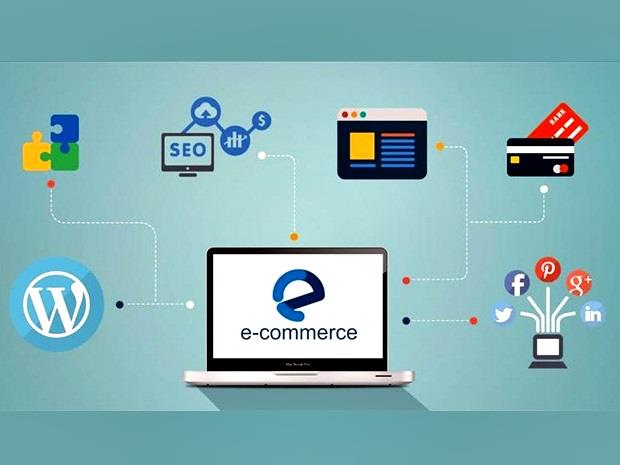|
|

|
|

5 Steps to Building an eCommerce Website |
|
By
Piyush Vekariya
11.9.2017
Phone:8866698094
Mail Now
|
Starting an eCommerce business is hard work. To be successful, you must continually evaluate your site, your sales, and your profits. Before you start building an eCommerce website, you need to consider how you sell your products. Think about if your products offer color choices, size choices, use a sliding price scale, and how many items will be included in a typical order.

Choosing a domain name and hosting
Choose a domain with your important product keywords; particularly if you plan on mostly relying on online advertising like banners or text links. If you need to build your brand, you should find a unique name that people will remember after they read it on your online and offline marketing campaigns.
Consider how words are spelled, frequently misspelled, and sound, carefully when making your choice. Say
your potential domain name out loud and think about how someone hearing it may spell the words. Mention the name to friends and family, if they ask how to spell your new name; it may be a poor choice.
In the beginning, you won’t need a big hosting account or web server. Use a shared web hosting account where it’s possible to expand web space and bandwidth. It’s much easier to upgrade an existing account then moving to another host. Moving has the added risk of possible downtime while your files are moved and your domain name is reassigned to your new host.
External shopping cart or complete web shop?
If you plan on selling less than 10 products; consider using a regular website with some advanced link/form to an external shopping cart application. While this is easier to set up, remember that people who leave your site and return later will be returning to an empty shopping cart which can lead to lost sales.
For a larger and more dynamic product catalog, full-featured eCommerce solutions are your best choice. Magento Commerce, Zen Cart and osCommerce are some of the great open source projects that provide free or low cost programs to run a web shop. All of them are very powerful and have many modules to build exactly what you need for your web shop. Their modular design allows even non- programmers to easily implement additional features.
Online Payments
For an online business to be successful, it is very important to offer the right payment methods. Consider your options carefully as some options like wire transfers are often very customer friendly but are very time intensive.
If your margins are high enough, you should offer credit card payments. A good option is PayPal; they even offer online credit card payments where the buyer is not required to have a PayPal account.
Once you establish some baselines and know your average number of monthly transactions, be sure to check the other online payment providers to see if they offer better rates. Don’t forget to check what services the bank where you have your business account offers as well.
Styling your eCommerce site
By using one of the free shopping cart applications, you should be able to invest in a professionally designed template. You will have a much easier time of customizing your online shop if you choose a shopping cart template before you begin customization. The quickest and cheapest solution to finding a unique design for your web shop is to start with one of the many available pre- designed templates and make the necessary modifications to make it your own.
If you have an existing web shop and you add one of the pre-made templates, you will need to add the modules again to retain all of your current customizations.
After the first year
You should ask yourself, what have I learned in that past year?, where have I failed?, and where have I excelled?
Review your sales to determine if there are any hidden gems or leeches. Your number one or two best-selling item may be costing you money instead of making you money; while that item you never truly promote is yielding the highest returns.
Review your shopping cart and payment options. Is there a better plan available for your sales volume? Are you paying too much per transaction? Are you losing sales because your payment option doesn’t allow for foreign sales?
Plan on expanding your product line? Research if your current payment service can handle the changes. If you plan on expanding into another country, be sure to research language and currency options.
Two Final Hints
Think about your future business plans every time you consider making modifications to your shopping cart application. Never modify your application because you think it is a nice feature or because YOU like it. Everything you do should be about your customers and enticing them to buy your products.
Create a testing area where you can test every modification before you make changes to your live application. Sometimes one small change can cause the entire website to stop working correctly – better to test offline then to lose business by having a non-functioning site.